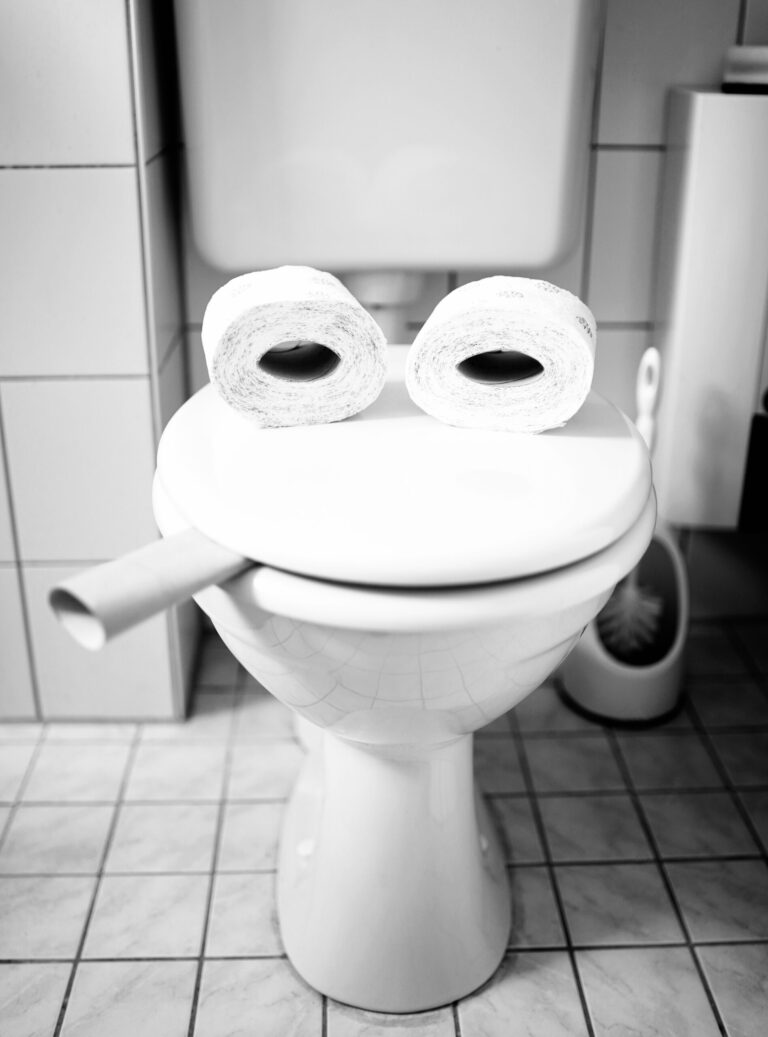Activities and Games to Support Wiping your Bottom!
Wiping one’s bottom is a skill that needs to be practiced and mastered. The child needs to learn how to sit and shift their body position to reach their bottom without falling off the toilet, they need to learn to tear off and fold the toilet paper, they need to learn to wipe firmly and thoroughly. Here are some tips and activities that can help with the process.
Reaching, balancing and relying on touch:
Balloon Wipe – practising reaching, postural positioning and developing a movement pattern.
Attach two inflated balloons together by tying the knots. Then tape or tie the balloons onto the back of a chair (this makes a pretend bum).
Recommendations – place the balloons lower (to bum level) on a stool, instead of a chair with a back, to practice balance. Sit the child at the front of the stool or chair or allow them to rest gently on the balloons for balance while not sitting on the balloons so they burst. Ensure your child’s feet are firmly on the ground.
Stick post it notes/ 3D stickers under and between the balloons so the child needs to stretch behind to reach for them! Try to retrieve them without looking.
Clothes peg Catch– Place clothes pegs onto the child’s clothes such as sleeves, back of T-shirt or jumper, shorts, skirts, or trousers. Ask the child to remove the pegs. Practising movement skills, balance, and coordination required. Make different rules such as completing this while standing, sitting, kneeling, only one hand etc.
To make it a game, why not play clothes peg catch? Everyone starts with 3 pegs on their back, they must remove the pegs (1 at a time) and stick them onto someone else’s back. Whoever has no pegs left on their shirt wins!
Blu tack Hide and Seek – Stick a small piece of blu tack on the child’s chair, they must find it by feeingl about the chair. Ensure they keep their eyes looking forward! Try difficult to reach places – behind the backrest, under the seat etc. This helps the child to learn to work by sense of touch.
Handbag Hunt – Fill a small handbag or shallow purse with different yet familiar items such as keys, coins, clothes pegs, marbles, remote control etc. Attach the bag to the back of a stool so it hangs behind the child’s bum. (Alternatively sit the child sideways on a chair and attach the bag on the opposite side, so the backrest isn’t in their way!)
Ask the child to find specific named items using their dominant hand (or wiping hand). In time to make this more challenging, place one unknow object in the bag and see if the child can guess what it is by sense of touch.
Rolling a ball – get the child to roll a large ball around their feet when standing, using two hands.
Now try roll the ball around their waist, without dropping.
Then, they must roll the ball around their knees. Try these skills while sitting!
Next try smaller sized balls – tennis ball, bouncy ball etc. or weighted balls!
To make this the ultimate challenge, try controlling the ball… blindfolded!
Wiping and Folding:
Parts to practise: practice wiping, thorough cleaning, folding tissue and discarding tissues/wipes when dirty
Peanut butter smear on a plate– Smear some peanut butter/toothpaste on a plate. This are chosen for their thick consistency. To make it more fun, laminate a picture of their favourite characters and they must wipe it clean to discover who’s underneath!
Recommendations – Prompt child to keep the wipe flat and to check the wipe for stains after every wipe, if dirty fold wipe and continue, or get a new piece of tissue/new wipe. Continue until clean.
Rolling playdough into snakes – To wipe up thoroughly, we need to learn to keep our fingers flat but also apply pressure. When playing with playdough practise rolling balls and snakes using fingers tips.
Folding– During arts and crafts, practise folding paper and tissue paper. Try make a card by folding paper in half. Show the child where they should bring the corners together or alternatively draw a line down the short side of the paper with marker, the child then needs to ensure that the other side of the paper covers/meets the marker line.
You can practise folding napkins, or face cloths, make sure you demonstrate what is expected.


